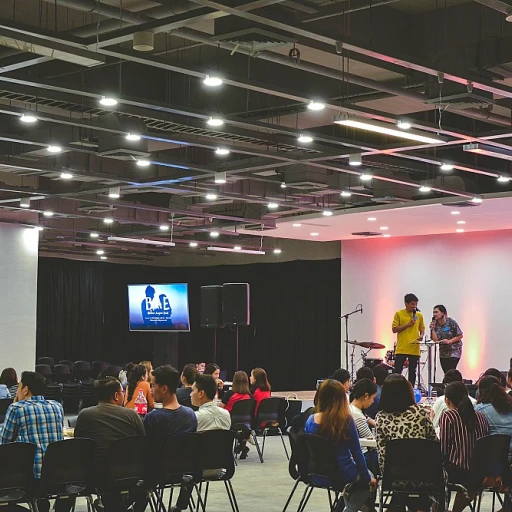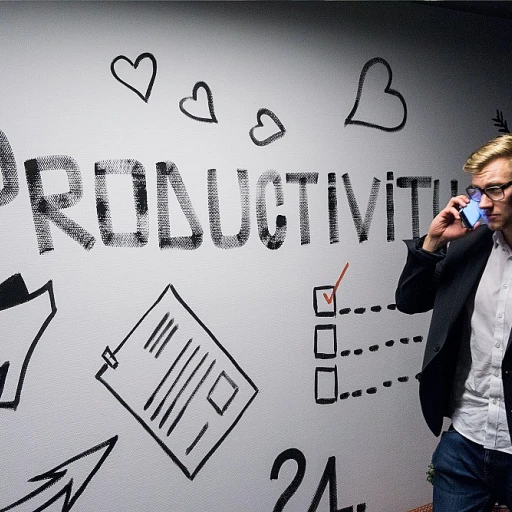Understanding Employee Engagement
The Importance of Fostering Employee Involvement
Understanding employee engagement is essential in addressing staff retention challenges and minimizing employee turnover. Engaged employees are more likely to remain with their organizations longer, contributing positively to a company's attrition metrics. However, employee engagement is more than job satisfaction; it involves a deeper emotional commitment to the organization and its goals.
For a start, effective communication techniques play a significant role in boosting employee engagement. By establishing clear channels for feedback and transparent information sharing, management can foster a sense of belonging and trust within the workforce. It's not only about discussing tasks but communicating a vision that aligns with employees' values and personal career goals.
A well-engaged employee base is vital for reducing attrition rates and enhancing retention rates. Employee turnover can be costly, impacting not just immediate operations but also the long-term company culture. One effective means of improving engagement is through nurturing a positive work environment where employees feel their contributions are valued.
Organizations also need to consider the benefits of professional development and how it ties into retention strategies. Offering growth opportunities shows commitment to individual advancement, thus encouraging employees to stay and grow with the company.
Employee engagement is a complex, multifaceted effort that goes beyond simple gestures. Embracing open and inclusive communication methods, combined with recognizing and rewarding staff efforts, can ensure employees are dedicated, reducing the likelihood that they will leave. For methods to enhance team morale in everyday scenarios, consider the insights on
effective work channel group shout-outs.
Effective Communication Techniques
Streamlined Communication Techniques for Enhanced Retention
Effective communication is a cornerstone in reducing employee turnover and fostering job satisfaction. A communication-focused approach can lead to a more engaged workforce, a lower attrition rate, and a healthier workplace. Whether it's through regular staff meetings, open-door policies, or feedback initiatives, ensuring clarity and transparency in communication can directly impact retention rates.
One of the most effective communication methods is establishing regular check-ins between employees and management. These sessions provide opportunities for employees to voice concerns, discuss career development, and express job satisfaction. This helps employees feel heard and valued, which can positively influence their engagement with the organization.
To further support retention strategies through communication, businesses should consider:
- Feedback Systems: Establish channels where employees can provide constructive feedback on workplace policies and management approaches. When workers feel respected and heard, it enhances their loyalty to the company.
- Clarity in Organizational Values: Clearly defined company values and communicated organizational goals can align employee efforts with the broader mission of the business. This alignment often results in increased employee engagement and commitment.
- Transparent Decision-Making Processes: Maintaining openness about decisions affecting the workforce can build trust and reduce attrition. Employees who are kept informed about changes and decisions feel more secure in their positions.
Implementing these communication strategies not only boosts morale but also aids in retaining valuable top talent. For more insights on effective ways to engage a team, explore
these reward strategies that can also positively impact retention rates. A well-communicated framework can indeed be a game-changer for any organization aiming to secure its long-term workforce stability.
Building a Positive Workplace Culture
Fostering a Supportive Work Environment
Cultivating a positive workplace culture stands as a critical factor in mitigating employee turnover and improving employee retention. A company culture that resonates with employees' values and needs can drive motivation, ultimately enhancing long-term job satisfaction.
- Work-life Balance: One of the main elements contributing to a positive work environment is the work-life balance. Organizations that promote flexibility in the workplace enable employees to align their professional responsibilities with personal obligations, reducing stress and preventing burnout.
- Inclusive Culture: Encouraging diversity and inclusivity within the workforce not only attracts top talent but also fosters innovation and engagement. Employees feel more comfortable in sharing ideas and feel recognized for their unique perspectives, reducing the temptation to leave for a more receptive employer.
- Value Alignment: Organizations should strive to align their core values with those of their workforce. This alignment helps in creating a shared vision that employees can believe in, enhancing their commitment to the company’s goals.
The cultural fabric of a workplace can greatly influence attrition rates. When staff members feel valued and part of a cohesive team, the likelihood of employees leaving diminishes. Implementing strategies that build and sustain an uplifting culture is crucial to managing employee retention effectively. For more insights on advancing these initiatives, you can explore
communication strategies for employee engagement.
The Role of Professional Development
Investing in Skill Development for Employee Loyalty
Professional development plays a critical role in shaping the employee experience and can directly influence employee retention. When organizations invest time and resources into the growth of their workforce, it demonstrates a commitment to employee success, which in turn can boost employee engagement. Employees are more likely to remain loyal to an organization that prioritizes their long-term growth and development.
Providing employees with opportunities to expand their skill sets not only enhances their job satisfaction but also contributes to reducing turnover rates. This can be achieved through various programs and initiatives such as:
- Training Workshops and Seminars: These can be tailored to different levels of employees within the company, allowing them to gain new skills and knowledge relevant to their roles.
- Mentorship Programs: Pairing less experienced employees with seasoned professionals can facilitate knowledge transfer and foster a culture of collaboration.
- Online Learning Platforms: Offering access to online courses enables employees to learn at their own pace and develop new competencies that can benefit the organization.
Moreover, professional development opportunities help align individual career aspirations with organizational goals. When employees see a clear path for advancement within the company, they are more likely to stay and contribute to a positive work environment. This alignment can play a crucial role in employee engagement, as staff feel valued and acknowledged for their contributions.
In today’s competitive business landscape, where the demand for top talent is high, a strong focus on professional development can differentiate a company and enhance its employer brand. By valuing and nurturing talent, organizations can create a supportive work environment that reduces employee attrition and promotes organizational success.
Recognition and Reward Systems
Creating a Culture of Appreciation
In the ever-evolving landscape of human resources communication, recognition and reward systems play an integral role in reducing employee attrition and enhancing employee retention. Companies that prioritize recognizing their workforce tend to experience improved job satisfaction and a more engaged work environment. This, in turn, positively impacts their retention rates.
A well-structured recognition system ensures that employees feel valued and appreciated for their contributions. Such systems can effectively reduce staff turnover by boosting morale and reinforcing employees' connection to the organization. Here are some key aspects to consider when building a recognition and rewards program:
- Tailoring Rewards to Individual Preferences: Not all employees are motivated by the same incentives. Some may appreciate monetary bonuses, while others might value time off or professional development opportunities. Understanding these preferences can help customize rewards that genuinely resonate with employees.
- Encouraging Peer Recognition: Providing employees with the opportunity to recognize their colleagues fosters a supportive and collaborative work environment. This peer-to-peer acknowledgment not only strengthens team bonds but also promotes continuous engagement across all levels of the organization.
- Public Acknowledgment: Celebrating achievements publicly during staff meetings or in newsletters enhances visibility and encourages a sense of pride among employees. This public recognition often serves as motivation for top talent and can be a powerful tool in improving the organization's overall retention strategy.
- Consistency and Fairness: To maintain credibility and employee trust, it is crucial that reward systems are applied consistently and perceived as fair. Transparent criteria for earning rewards help ensure that employees believe in the value and integrity of the program.
Ultimately, by fostering a culture of appreciation through effective recognition and reward systems, companies can make significant strides in reducing turnover rates and increasing employee engagement. This not only ensures a happier and more productive workplace but also acts as a cornerstone for successful retention strategies.
Feedback and Improvement Mechanisms
Channeling Feedback for Continuous Improvement
A robust feedback and improvement mechanism is essential for sustaining an engaging work environment and reducing employee turnover. By understanding the underlying dynamics that foster job satisfaction and utilizing effective feedback systems, businesses can enhance employee retention and drive long-term success.
Firstly, create avenues for regular, open communication between management and staff. This allows employees to voice their ideas and concerns, reinforcing their role within the organization. Encouraging such dialogue establishes trust and showcases that the company values their input and contributions.
Implementing structured feedback sessions can significantly boost employee engagement. Regular one-on-one meetings offer an opportunity for both parties to assert expectations, discuss progress, and explore potential career growth. This not only aids in identifying any issues that may be causing staff to leave but also helps in realigning individual goals with the organization’s objectives, thereby decreasing turnover rates.
Furthermore, actively seek feedback from employees on their experiences within the company culture. Such insight aids in fine-tuning retention strategies and gaining a deeper understanding of what employees feel is working well and what aspects might need adjustment. Personalized surveys and anonymous feedback tools can be particularly effective in this context, providing the organization with actionable data.
Utilizing feedback to its fullest potential means implementing the necessary changes based on collected input. Employees notice when their feedback leads to tangible changes, resulting in a positive work life and heightened morale. This, in turn, serves to attract and retain top talent, effectively enhancing the retention rate of the organization.
In conclusion, while turnover is an inevitable part of any business, effectively channeling feedback towards continuous improvement can significantly aid in managing employee attrition. By investing time and resources into understanding and addressing workforce concerns, companies can foster a dynamic and engaging workplace that not only reduces staff turnover but also propels the organization toward greater success.












